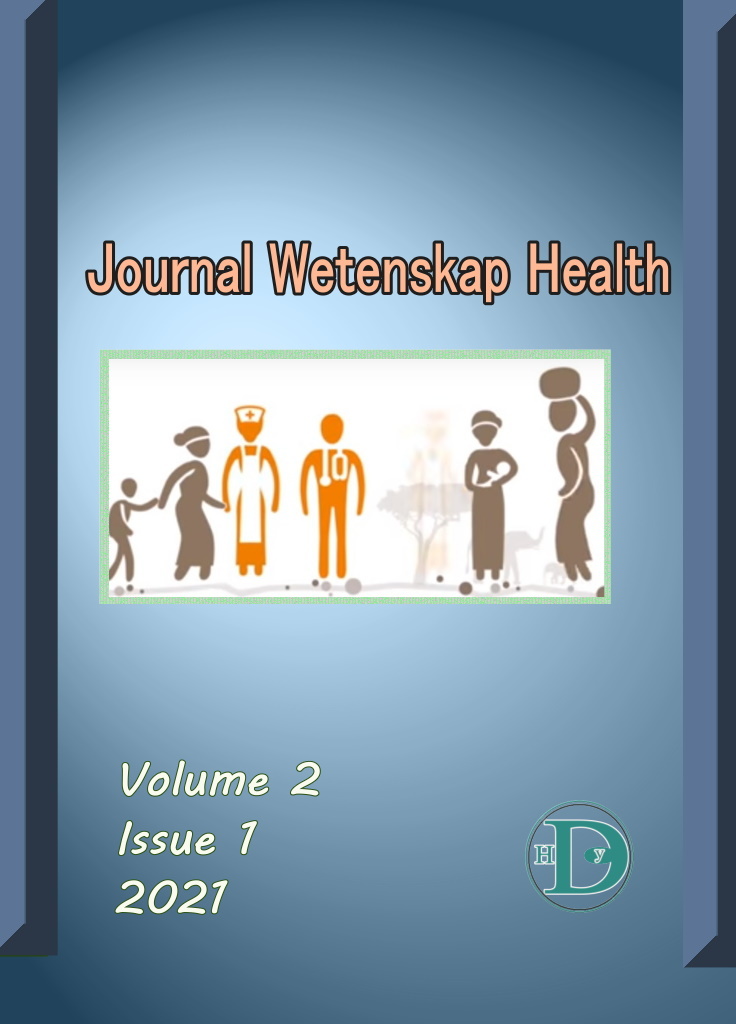Analysis of the Relationship of the Quality of Health Services Review Interest and Bed Occupancy Rate
Main Article Content
Abstract
The purpose of this study was to determine the relationship between the quality of health services and the interest in repeat visits and to analyze the relationship with the value of the Bed Occupancy Rate (BOR) in the VIP room of the Datu Beru Takengon Regional General Hospital in 2020. The research design used an analytic survey with a cross sectional design. The population of patients treated in the VIP Room of the Datu Beru Takengon Hospital was 105 people. The sampling technique used accidental sampling. The number of samples to be studied was 77 people. Data analysis was performed by univariate, bivariate and multivariate analysis. Base on the results of the research on the reliability variable obtained p-value = 0.001, responsiveness = 0.002, assurance = 0.017, empathy = 0.003, physical evidence = 0.002 <0.05, meaning that there is an influence between reliability, responsiveness, assurance, empathy, physical evidence of interest. revisit and it is related to the Bed Occupancy Rate (BOR). The results of multivariate analysis showed that the most influential variable in this study was the variable of empathy with an Exp (B) value of 12.048. The conclusion is that there is a relationship, reliability, responsiveness, assurance, empathy for re-visit interest and the value of the Bed Occupancy Rate BOR, the results of the multivariate analysis show that the most dominant factor is the variable of empathy.
Article Details

This work is licensed under a Creative Commons Attribution-ShareAlike 4.0 International License.
References
Bayaga, A. (2010). Multinomial Logistic Regression: Usage and Application in Risk Analysis. Journal of applied quantitative methods, 5(2).
Bernard, D., Quine, S., Kang, M., Alperstein, G., Usherwood, T., Bennett, D., & Booth, M. (2004). Access to primary health care for Australian adolescents: how congruent are the perspectives of health service providers and young people, and does it matter?. Australian and New Zealand Journal of Public Health, 28(5), 487-492.
Hellevik, O. (2009). Linear versus logistic regression when the dependent variable is a dichotomy. Quality & Quantity, 43(1), 59-74.
Kennedy, E. C., Bulu, S., Harris, J., Humphreys, D., Malverus, J., & Gray, N. J. (2013). “Be kind to young people so they feel at home”: a qualitative study of adolescents’ and service providers’ perceptions of youth-friendly sexual and reproductive health services in Vanuatu. BMC health services research, 13(1), 1-12.
Mac Nally, R. (2000). Regression and model-building in conservation biology, biogeography and ecology: the distinction between–and reconciliation of–‘predictive’and ‘explanatory’models. Biodiversity & Conservation, 9(5), 655-671.
McKelvey, R. D., & Zavoina, W. (1975). A statistical model for the analysis of ordinal level dependent variables. Journal of mathematical sociology, 4(1), 103-120.
Phiri, M., & Chen, B. (2014). Case Studies: Design Practice and Application of Healthcare Technical Guidance and Tools. In Sustainability and Evidence-Based Design in the Healthcare Estate (pp. 69-237). Springer, Berlin, Heidelberg.
Pohl, T., Seiler, C., Billinger, M., Herren, E., Wustmann, K., Mehta, H., ... & Meier, B. (2001). Frequency distribution of collateral flow and factors influencing collateral channel development: Functional collateral channel measurement in 450 patients with coronary artery disease. Journal of the American College of Cardiology, 38(7), 1872-1878.
Wang, H., Gusmano, M. K., & Cao, Q. (2011). An evaluation of the policy on community health organizations in China: will the priority of new healthcare reform in China be a success?. Health policy, 99(1), 37-43.
